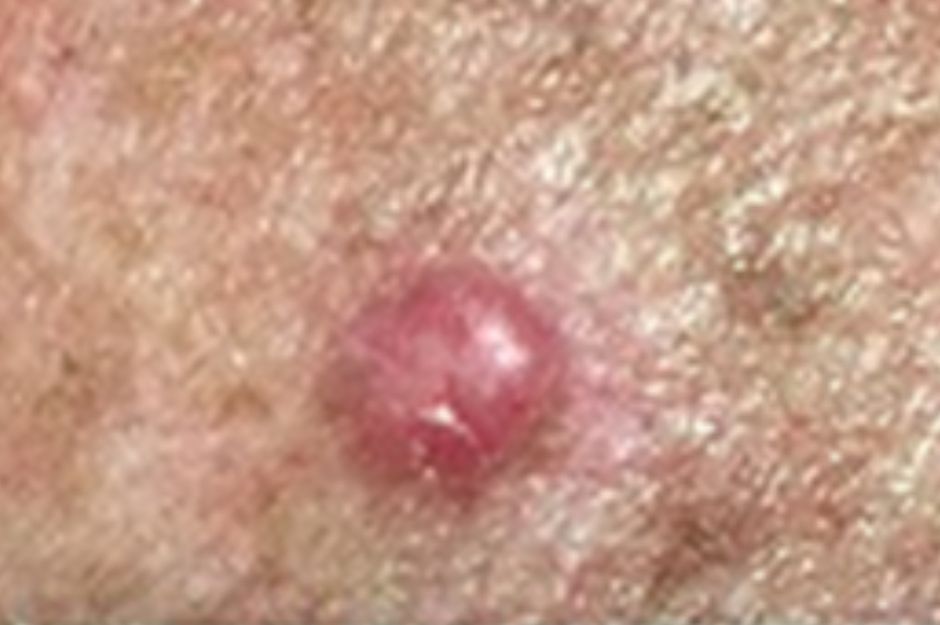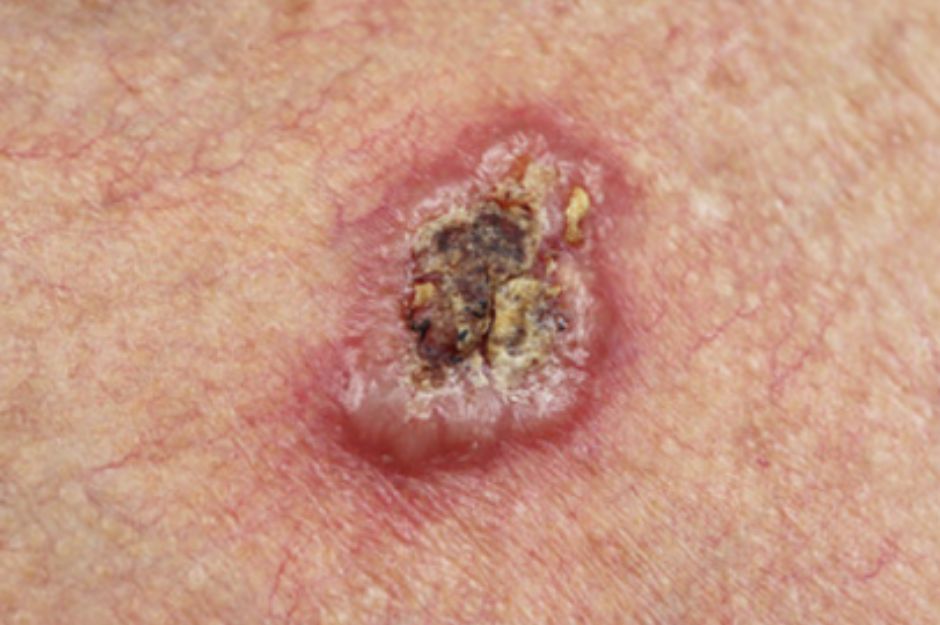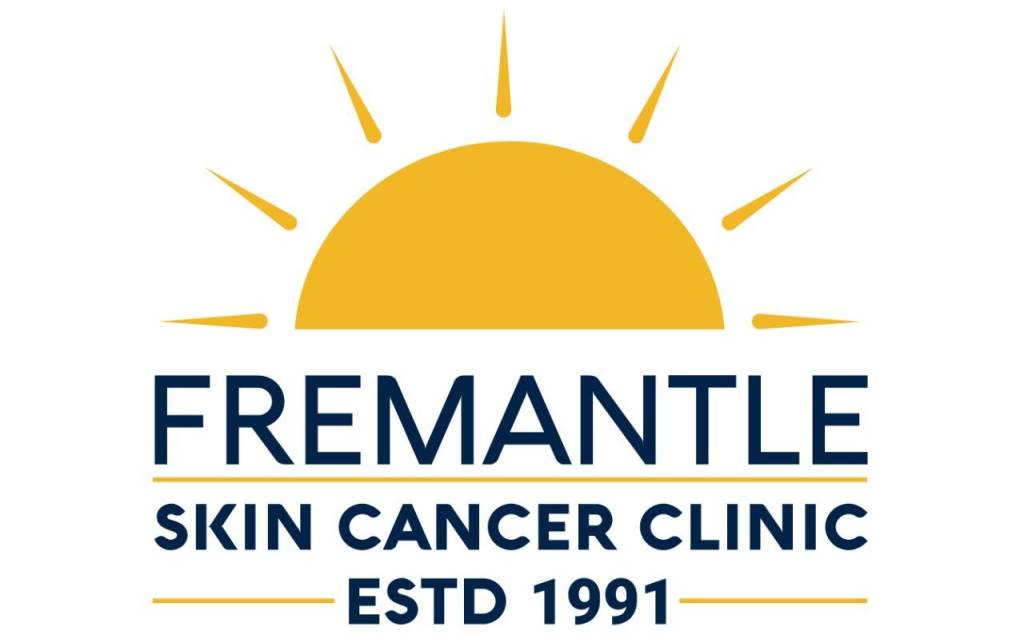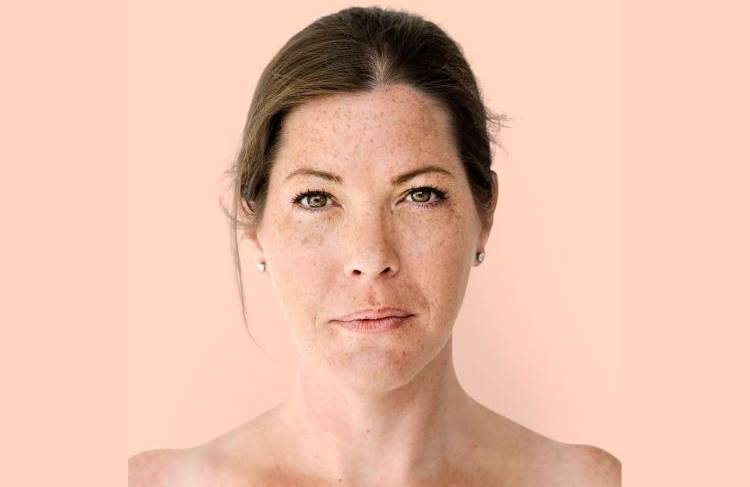About skin cancer
Skin cancer is a disease of the body’s skin cells. Skin cancer develops when cells which make up the skin are damaged and grow abnormally.
The sun’s ultraviolet (UV) radiation is the main cause of skin cancer. Each time your skin is damaged by UV, changes take place in the structure and function of the skin cells. If UV damage keeps adding up, skin cells become less able to repair, increasing the risk of skin cancer.
Types of Skin Cancer


- About Skin Cancer
- Symptoms
- Causes
- Diagnosis
- Treatment
- Prevention
What is skin cancer?
Skin cancer occurs when skin cells are damaged, for example, by overexposure to ultraviolet (UV) radiation from the sun.
There are three main types of skin cancer:
- Basal cell carcinoma
- Squamous cell carcinoma
- Melanoma – the most dangerous form of skin cancer.
Both basal cell carcinoma and squamous cell carcinoma are known as non-melanoma skin cancer or keratinocyte cancers. Keratinocyte cancer is more common in men, with almost double the incidence compared to women.
Melanoma is the third most common cancer in Australians excluding keratinocyte cancers as data on incidence is not routinely collected).
Every year, in Australia:
- Skin cancers account for around 80% of all newly diagnosed cancers
- The majority of skin cancers are caused by exposure to the sun
- The incidence of skin cancer is one of the highest in the world, two to three times the rates in Canada, the US and the UK.
Learn more about how Cancer Council funded researchers are working on curing Australia’s national cancer.
Basal cell carcinoma (BCC)
This is the most common but least dangerous form of skin cancer. It grows slowly, usually on the head, neck and upper torso. It may appear as a lump or dry, scaly area. It can be red, pale or pearly in colour. As it grows, it may ulcerate or appear like a sore that does not heal properly. The earlier BCC is detected, the easier it is to treat.
Squamous cell carcinoma (SCC)
This type of skin cancer is not as dangerous as melanoma but may spread to other parts of the body if not treated. It grows over some months and appears on skin most often exposed to the sun. It can be a thickened, red, scaly spot that may bleed easily, crust or ulcerate.
Melanoma
Melanoma can grow quickly. The most aggressive forms can become life-threatening in as little as six weeks and if untreated, it can spread to other parts of the body.
Use the ABCDE rule to look for melanoma where:
- A = asymmetry, look for spots that are asymmetrical not round
- B = border, look for spots with uneven borders
- C = colour, look for spots with an unusual or uneven colour
- D = diameter, look for spots that are larger than 7 mm
- E = evolution, look for any changes to spots on your skin, and see your doctor as soon as possible if you notice any changes.
The earlier melanoma is found, the more successful treatment is likely to be.
Melanoma is often related to a pattern of irregular high sun exposure, including episodes of sunburn.Superficial spreading melanoma (the most common type of melanoma)


It is usually flat with an uneven smudgy outline, may be blotchy and more than one colour – brown, black, blue, red or grey.
Nodular melanoma

A highly dangerous form of melanoma that looks different from common melanomas – they are raised from the start and have an even colouring (often red or pink and some are brown or black). This type of melanoma grows very quickly and needs to be treated as soon as possible. They are most common in older people in sun exposed areas such as the face, ears, neck and head.
Other forms of melanoma include lentigo maligna melanoma, acral lentiginous melanoma and desmoplastic melanoma.
Warning signs of sun damaged skin and skin cancer risk

Spots, blemishes, freckles and moles, similar to those pictured above, are signs of sun-damaged skin. They are a warning sign your skin has had UV damage. If you notice them changing, see your doctor.
The main cause of skin cancer is over exposure to UV radiation. You can reduce your risk by using sun protection during sun protection times.
Skin cancer facts & statistics
- More than two in three Australians will be diagnosed with skin cancer in their lifetime.
- About 2,000 Australians die from skin cancer each year.
- Australia has one of the highest rates of skin cancer in the world.
- Medicare records show there were over a million treatments for squamous and basal cell carcinoma skin cancers in 2018 – that’s more than 100 skin cancer treatments every hour.
The good news is that using sun protection will cut your risk of skin cancer at any age, no matter if you are 6, 16 or 60 years old. And most skin cancers can be successfully treated if found early.
How common is skin cancer?
Australia has one of the highest rates of skin cancer in the world. About two in three Australians will be diagnosed with some form of skin cancer before the age of 70. Non-melanoma skin cancer is the most common cancer diagnosed in Australia.
Melanoma of the skin statistics
Melanoma skin cancer incorporates ICD-10 cancer code C43 (Malignant neoplasm of skin).
Estimated number of new cases of melanoma of the skin diagnosed in 2022

Estimated % of all new cancer cases diagnosed in 2022

Estimated number of deaths from melanoma of the skin in 2022

Skin cancer signs and symptoms
The sooner a skin cancer is identified and treated, the better your chance of avoiding surgery or, in the case of a serious melanoma or other skin cancer, potential disfigurement or even death.
It is also a good idea to talk to your doctor about your level of risk and for advice on early detection.
Become familiar with the look of your skin, particularly spots and moles, so you pick up any changes that might suggest a skin cancer.
Look for:
- Any crusty, non-healing sores
- Small lumps that are red, pale or pearly in colour
- New spots, freckles or any moles changing in colour, thickness or shape over a period of weeks to months.
Skin cancer identification poster
Causes of skin cancer
Australia has one of the highest rates of skin cancer in the world. Anyone can be at risk of developing skin cancer, though the risk increases as you get older.
The majority of skin cancers in Australia are caused by exposure to UV radiation in sunlight.
Some factors that increase your risk of skin cancer include:
- Sunburn
- Tanning
- Solariums.
Who is at risk?
Anyone can develop skin cancer but it’s more common as you age.
Many factors can increase your risk of skin cancer, including having:
- Pale or freckled skin, especially if it burns easily and doesn’t tan
- Red or fair hair and light-coloured eyes (blue or green)
- Unprotected exposure to UV radiation, particularly a pattern of short, intense periods of sun exposure and sunburn, such as on weekends and holidays
- Actively tanned or used solariums
- Worked outdoors or been exposed to arsenic
- A weakened immune system – this may be from having leukaemia or lymphoma or using immunosuppressive medicines (e.g. for rheumatoid arthritis, another autoimmune disease or for an organ transplant)
- Lots of moles, or moles with an irregular shape and uneven colour (dysplastic naevi)
- A previous skin cancer or a family history of skin cancer
- Certain skin conditions such as sunspots.
People with olive or very dark skin have more protection against UV radiation because their skin produces more melanin than fair skin does. However, they can still develop skin cancer.
Diagnosis of skin cancer
It is important to check your skin regularly and check with your doctor if you notice any changes.
In the majority of cases, your GP will examine you, paying attention to any spots that may look suspicious. Your GP may perform a biopsy (remove a small sample of tissue for examination under a microscope). In some cases your GP may refer you to a specialist, such as a dermatologist, if necessary.
Biopsy
If you notice any significant changes to your skin, your doctor may examine you. Diagnosis is by biopsy (removal of a small sample of tissue for examination under a microscope)
Treatment for skin cancer
The type of treatment depends on the type and size of the cancer and where it is located.
Surgical
The main aim of surgical treatment for skin cancer is to remove the lesion with appropriate clinical margin. This clinical margin will depend on the type of skin cancer, site and any additional risk feature identified in the biopsy.
The type of surgery will depend on the type of skin cancer, size and its location on the body. This could include:
- Simple Excision – usually in shape of ellipse
- Complex Excision – requiring flaps, graft and other complex surgical procedures
Doctors at our clinic are well experienced in simple and complex procedures including flaps and grafts to provide the best possible outcome for our patients.
Non-surgical
Common non-surgical treatments in Skin Cancer care are:
- Photodynamic Therapy – not available at our clinic
- Efudix
- Aldara
- Cryotherapy
These options can be used for specific type of lesions only, your doctor will discuss this with you for clinically appropriate lesions.
Follow-up care and wound care
Our experienced nurses will apply appropriate dressing after the surgery and arrange a follow-up appointment for wound review. This might very between 1-5 days depending on the type and complexity of surgery. We will provide you information sheet for your wound care depending on the type of surgery you had.
Protect your skin
For best protection, when the UV level is 3 or above, we recommend a combination of sun protection measures:
- Slip on some sun-protective clothing – that covers as much skin as possible.
- Slop on broad spectrum, water resistant SPF30 sunscreen. Put it on 20 minutes before you go outdoors and every two hours afterwards. Sunscreen should never be used to extend the time you spend in the sun.
- Slap on a hat – that protects your face, head, neck and ears.
- Seek shade.
- Slide on some sunglasses – make sure they meet Australian standards.
Be extra cautious in the middle of the day when UV levels are most intense.
For further information please visit our page on preventing skin cancer.




